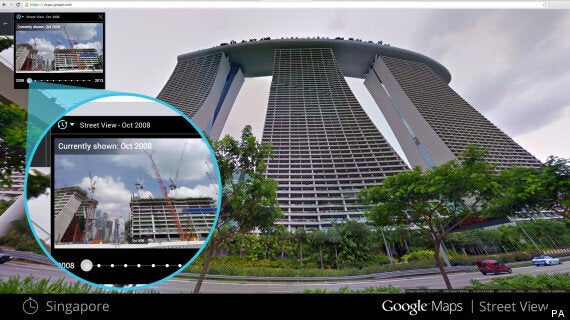Google has launched a new version of Street View which will let users travel back in time all the way to the misty ancient world of 2007.
The feature will let users see how a place has changed over time.
From today, users will be able to click on a new clock icon in the corner of the screen when using Street View, which enables anyone to explore roads and areas almost anywhere in the world.
Clicking this new icon will then allow users to move a scrollbar, changing the year and even season of the area or building they are currently looking at to see how it has changed over time.

In a post on the official Google blog, Google Street View product manager Vinay Shet said: "If you've ever dreamt of being a time traveller like Doc Brown, now's your chance.
"Starting today, you can travel to the past to see how a place has changed over the years by exploring Street View imagery in Google Maps for desktop. We've gathered historical imagery from past Street View collections dating back to 2007 to create this digital time capsule of the world."
Google Street View is one of the company's most impressive achievements, having been mapped out by cars and mounted cameras driven across most of the world, but this is the first time Google has made more than one version of the resulting images available to the public.
"Now with Street View, you can see a landmark's growth from the ground up, like the Freedom Tower in New York city or the 2014 World Cup stadium in Fortaleza, Brazil," said Mr Shet.
"This new feature can also serve as a digital timeline of recent history, like the reconstruction after the devastating 2011 earthquake and tsunami in Onagawa, Japan. You can even experience different seasons and see what it would be like to cruise Italian roadways in both summer and winter."
Street View has primarily been used as a way of visualising directions to help users find and identify locations they are looking for, but the service has become increasingly popular among "armchair explorers", who have used Street View to discover far away parts of the world without ever leaving home.
As a result, Google has been adding tourism and beauty hotspots to the service for some time.
This new "time machine" feature will aim to get more people using the service. Earlier this month, the technology firm added maps of the UK's rivers and canals for the first time.
Google recently announced that it was to begin using a new algorithm that can read the house numbers in images on the service, and then correlate these with real addresses in order to improve the accuracy of addresses supplied in Google searches.